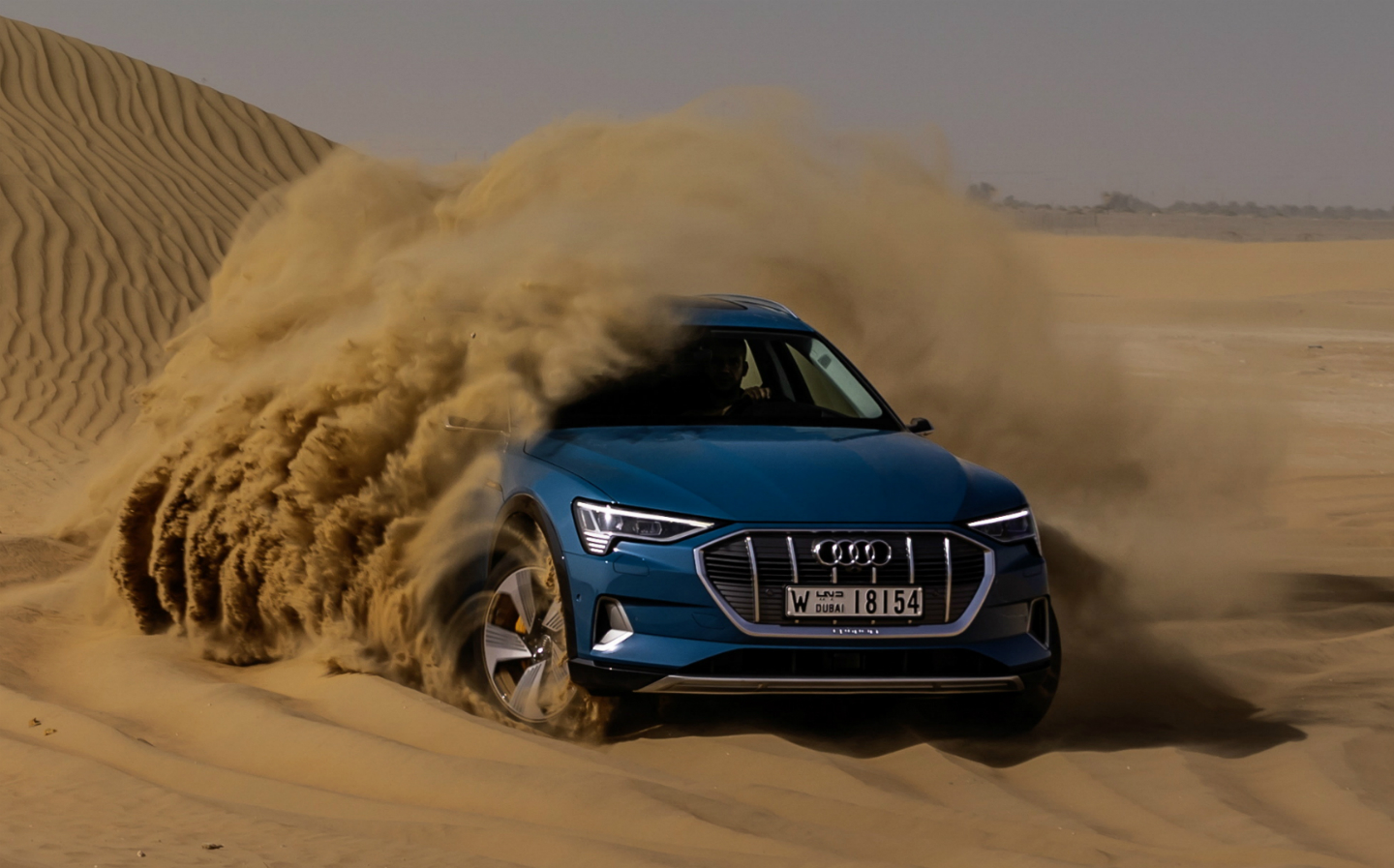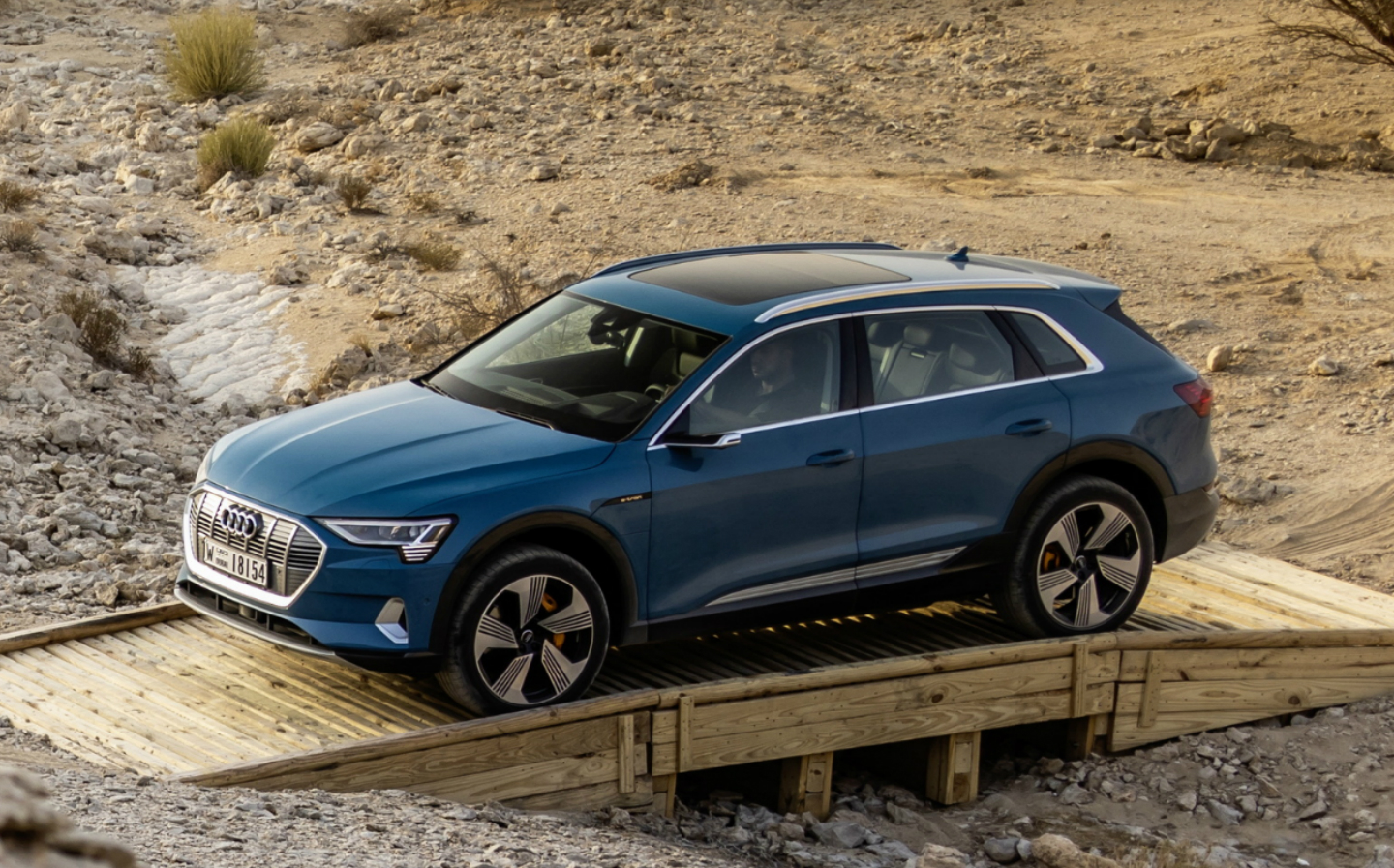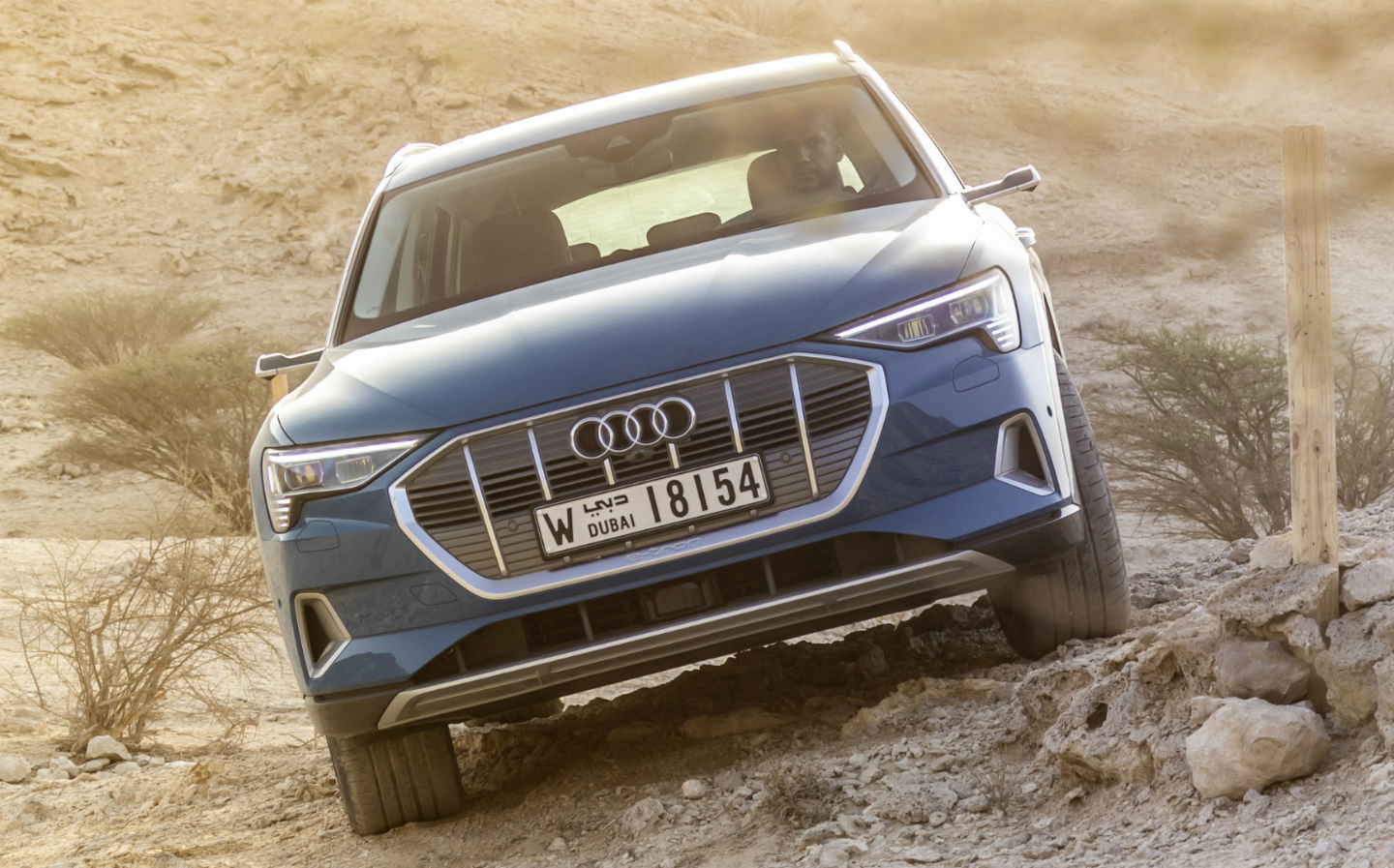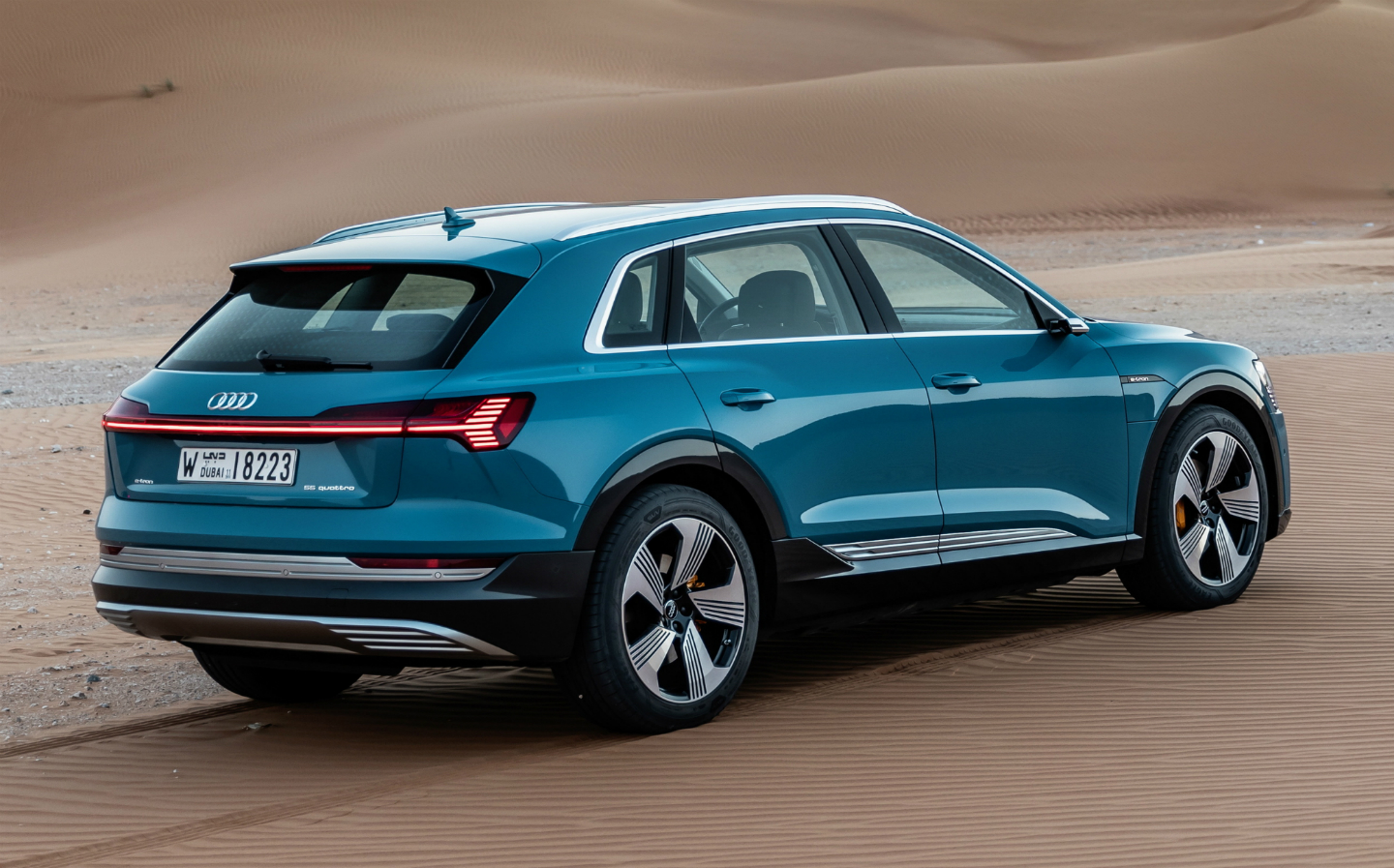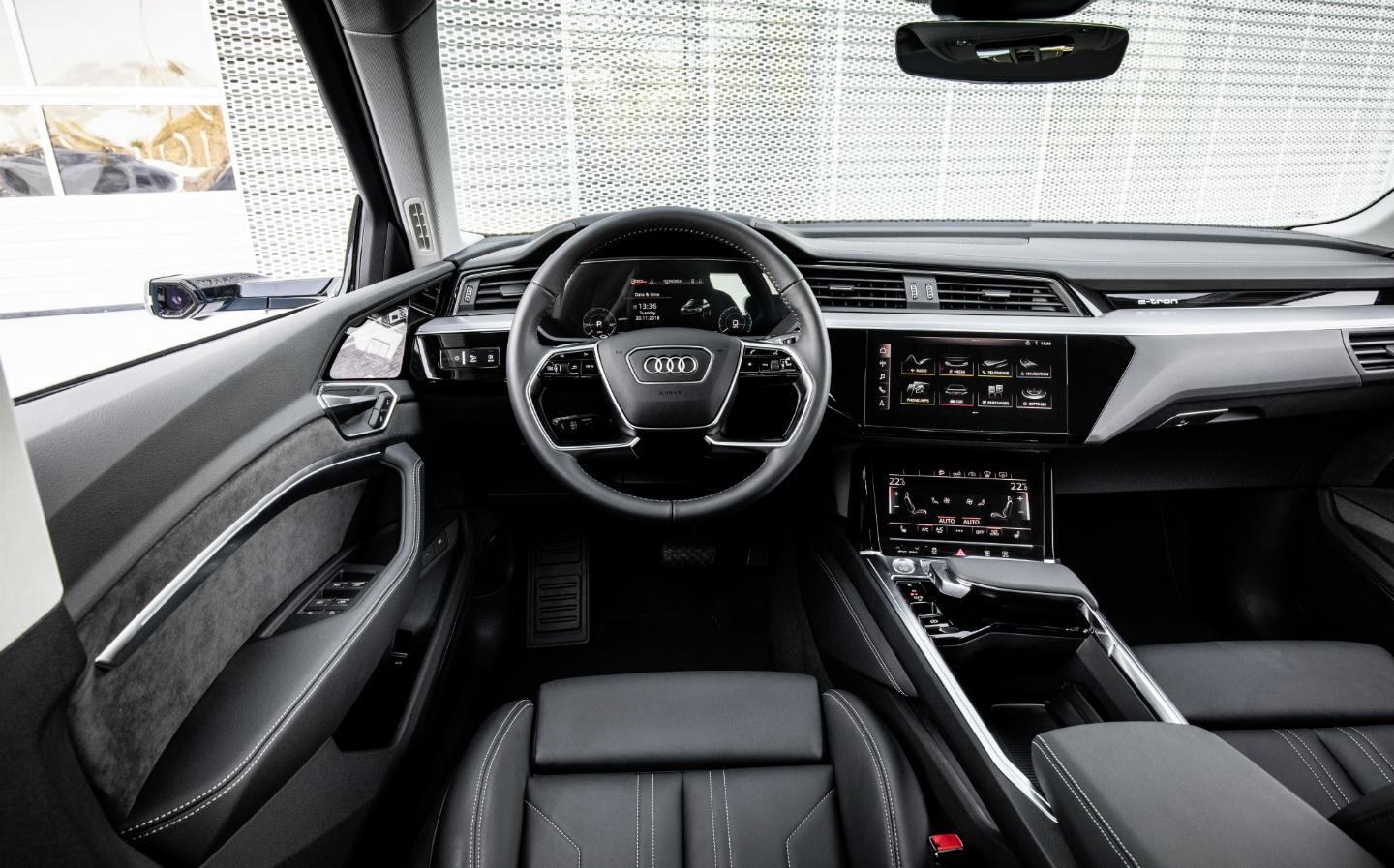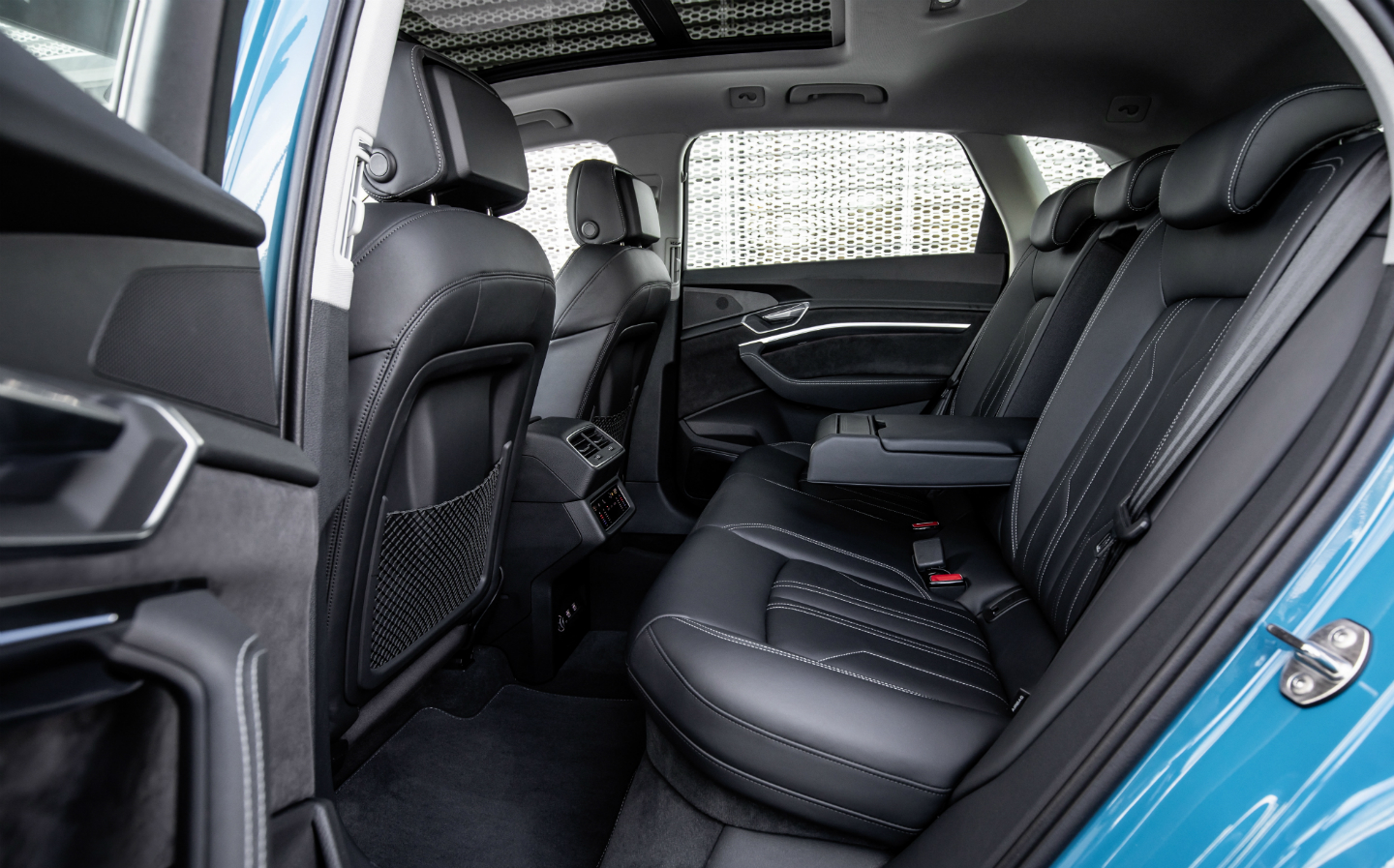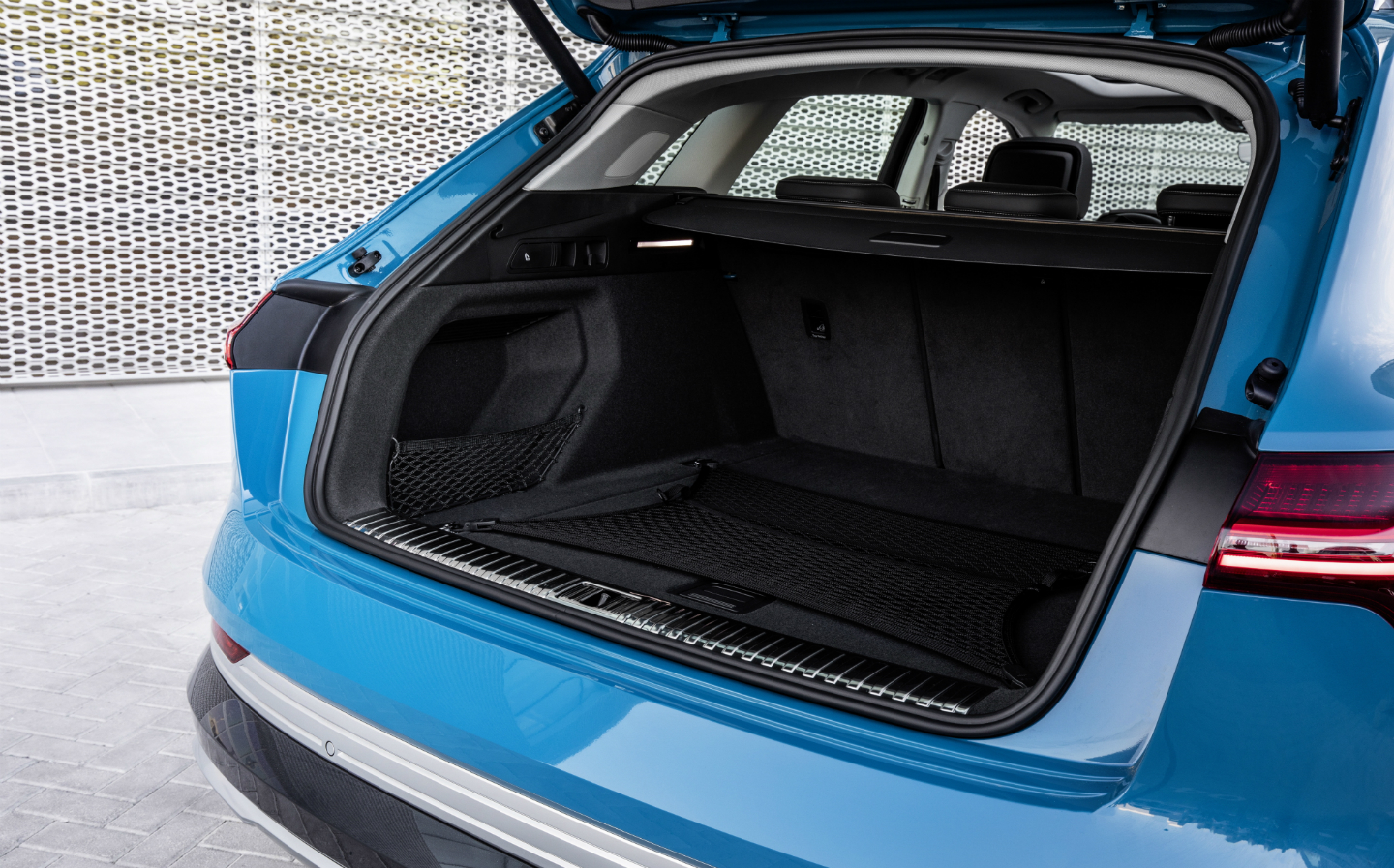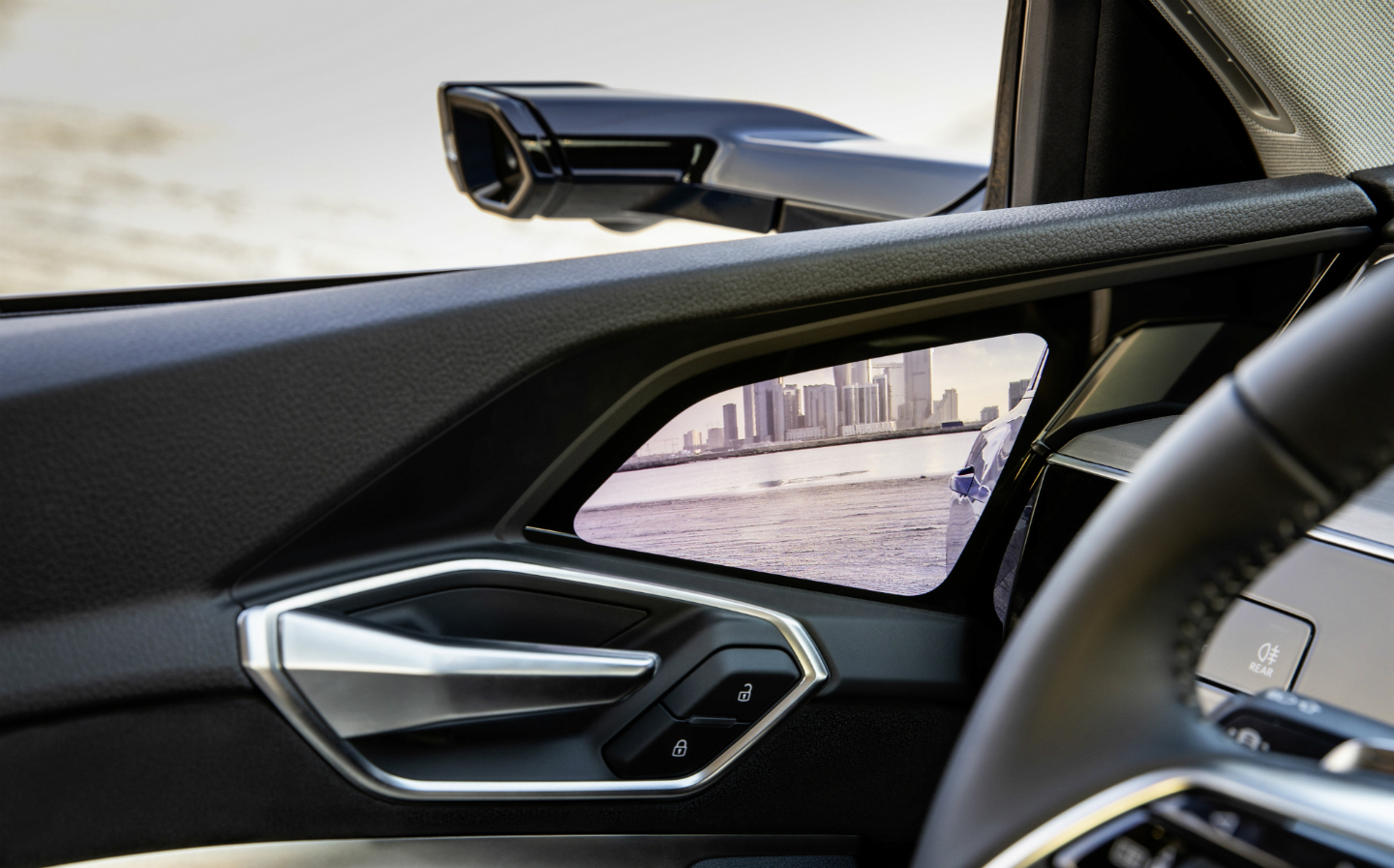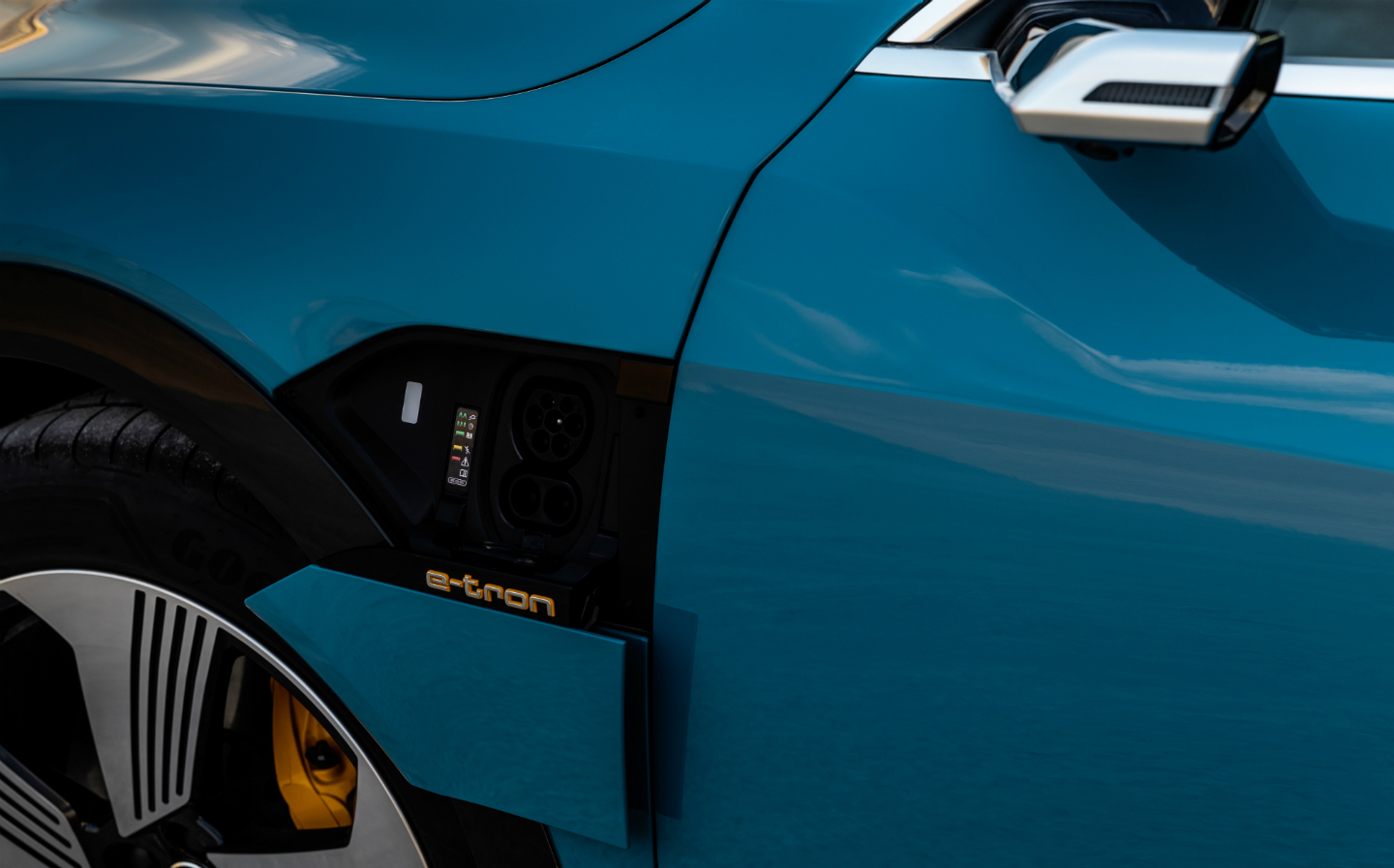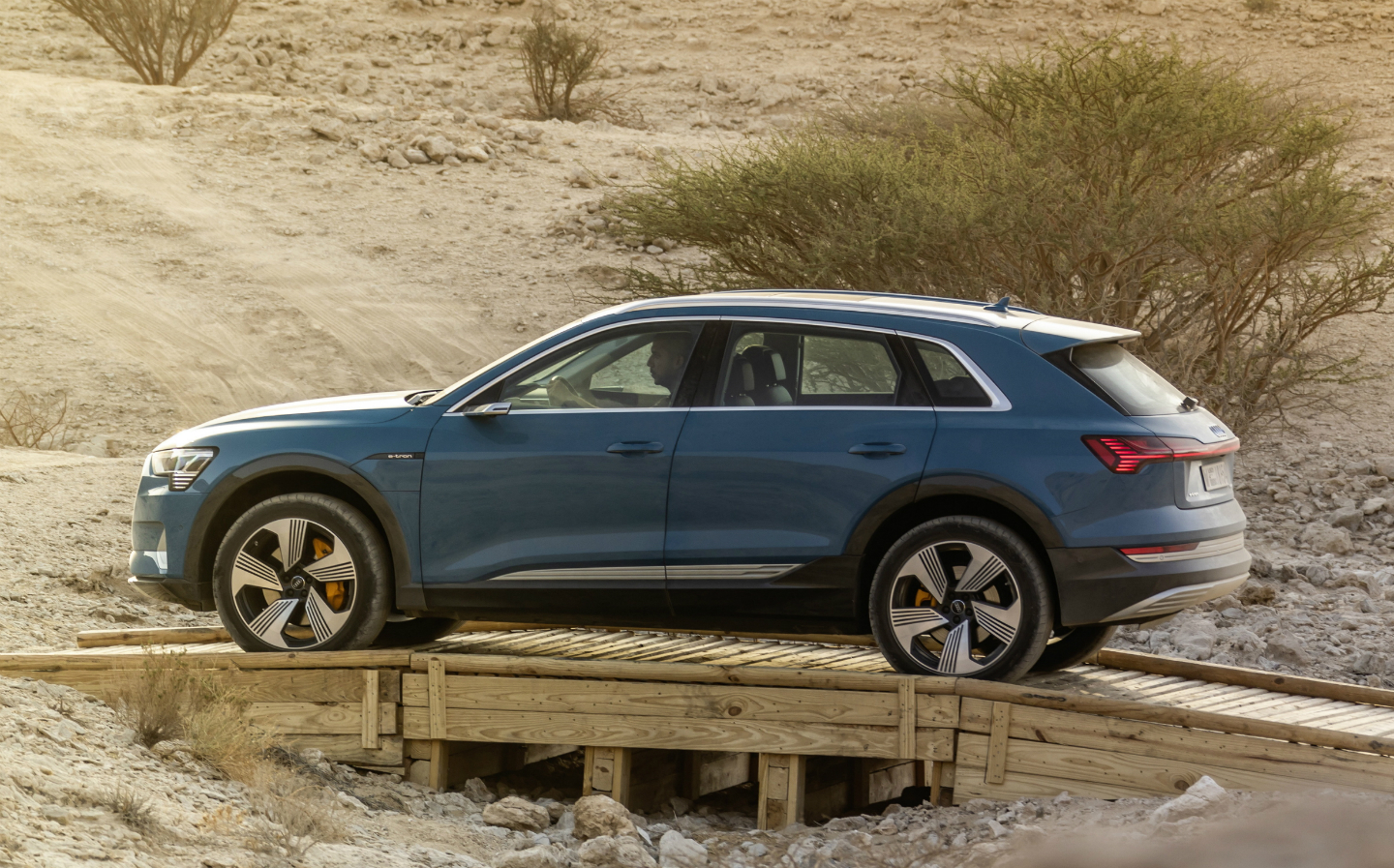2019 Audi e-tron review
The electric future has yet to catch it up
GET READY for the year of the electric car: 2019 will see the arrival of a series of battery-powered models such as the Mercedes EQC, Porsche Taycan and Audi e-tron that could spark a revolution in the way we drive.
They promise comfort and reliability on a par with their fossil-fuel counterparts. No longer will rechargeable cars be seen as glorified milk floats, manufacturers claim, but sleek, high-performance machines that are more tax- and environment-friendly than their petrol and diesel-powered equivalents.
A big welcome, then, to the first Teutonic Tesla: the Audi e-tron, due on sale next month. So convinced is Audi that this is the car of the future that it declares: “Fossil fuel really is ancient history for this car — today marks the start of a new era for Audi.”
It says the e-tron can “cover more than 248 miles on a single charge”, according to the WLTP cycle, the new measurement for all passenger cars, while “the battery can be replenished at a fast-charging station (150kW) in about half an hour”.
But are electric cars really about to displace hydrocarbon-powered models? On the face of it, the e-tron’s figures look impressive — enough to give Tesla’s Model S and Model X a run for their money, and at a price to match (£71,490). But for most buyers the choice will not be between the e-tron and a Tesla, but the e-tron and a conventionally powered Audi. On this basis, it starts to look distinctly ho-hum.
A five-minute refuel of a diesel Audi Q7 will deliver a range at least twice that of the e-tron. And of course it’s far easier to find a filling station than it is to find a fast charger — important when you’re nearing empty on a winter evening. Audi is gently pressing home the point that this car is for everyday, predictable journeys, rather than driving, say, to a ski lodge in the Alps or a holiday home in Spain.
“There is generally no need to stop at charging stations during everyday driving,” the company says. In other words, it’s intended for medium-distance commutes, school runs and weekend outings to shopping centres, cinemas and the like, where there’s no need to stop mid-journey and plug in.
The battery is most easily replenished plugged into a home wallbox overnight. This works well enough if you have off-road parking; not so good if you have to rely on street parking.
Assuming you’re happy with those limitations, should you buy one? There’s no doubt this is a clever piece of engineering, and a lot of car for the money. Audi is keen to encourage electric take-up, so the e-tron is priced to sell rather than recover its huge development costs.
Sensibly, it has installed the electrics — motors mounted on front and rear axles — into the type of vehicle that everybody wants these days: an SUV. The one I drove got maximum points for cool.
Devilishly good-looking — with Audi’s distinctive LED headlights and octagonal grille — it sported a ruggedised body kit that while a tad excessive for a Surrey driveway was just the ticket on the edge of the Kalahari desert where I drove it. Audi’s excuse for flying journalists thousands of miles to Africa was to show off what it regards as the vehicle’s main point of difference from the Tesla — its trademarked quattro four-wheel-drive system.
The Audi e-tron has excellent handling, possibly the best of any electric car I’ve driven
In Namibia there are giant salt pans that are like driving on summer snow. You can turn off the traction control and drift until you reach the friction limit of the tyres and the car breaks away. It’s great fun but surely a bit pointless unless you come across a gritting lorry that’s accidentally dumped a load of winter salt on the motorway. No, no, say Audi’s engineers. The demonstration proves just how good the e-tron is in wet and cold weather as well as off-road. True enough, it delivered excellent handling, possibly the best of any electric car I’ve driven.
There’s a built-in off-road mode that raises the air suspension by 2in to avoid the low-slung battery compartment snagging, and sets up the transmission and throttle for rocky or sandy terrain. That said, the e-tron is no hardcore mud-plugger and would flounder on a challenging route such as the Rubicon Trail in California. But I managed to extricate it from axle-deep orange sand on the dunes and trails around the Bitterwasser safari lodge, while curious springbok and giraffes looked on.
It comfortably seats four adults with ample leg and headroom, and the 660-litre boot (1,725 litres with seats down) is enough for a trip to a garden centre or a flat-pack furniture store, provided you don’t buy a full-length sofa.
It has taken Audi about five years to get the e-tron into production. Like most other manufacturers, it spent a year dismissing the Tesla Model S as no threat when it emerged in 2012. Then, realising it was, it got on with stripping down Elon Musk’s electric game-changer before assembling its own version in secret.
The battery, mounted low down between the axles, is a 700kg monster that accounts for a significant proportion of the car’s 2,490kg weight. Heavy or not, the e-tron is incredibly quick for a big SUV, the electric drivetrain delivering all the power as soon as you press the throttle. It reaches 62mph in 6.6 seconds, or 5.7 seconds in overboost mode, though that can be used only in eight-second bursts.
The 660-litre boot is enough for a trip to the flat-pack furniture store, provided you don’t buy a full-length sofa
Though Audi is keen to parade the e-tron’s advanced technical abilities, many customers may be drawn to it by exactly the opposite — its relative ordinariness. You expect it to drive like a computer, but, in fact, it drives like a normal SUV. The driving position and controls are in the places you’d expect, and the virtual cockpit display is borrowed from other top-of-the-line models.
Audi offers cameras in place of side mirrors as an optional extra, which it says reduce drag. However, it’s hard to see that this justifies the £1,250 cost, and the screens integrated into the door panels seem less clear than old-fashioned mirrors — especially in the glare of the midday African sun.
The e-tron is good, very good. But it’s still a technology that’s on its way, rather than fully here. For people who don’t have a wallbox charger at home, it’s a non-starter. Charging it from a 13-amp socket is like trying to fill a swimming pool with an eye-dropper. No doubt at some point when we all have electric cars we’ll laugh at the idea of driving anything else, but at the moment there are parallels with early mobile phones: expensive, bulky and served by a sparse network — of phone masts, in that case.
Round the corner are add-ons that will make all the difference. Electric charging mats allow you to charge your car similarly to a toothbrush — by driving it over the mat and leaving it overnight. The mats are being built into some expensive houses so you can park in your garage and let the car do the rest.
For now, though, many ordinary customers will regard this — as did the giraffes — mainly as something to keep a careful eye on.
Head to head
Audi e-tron vs Jaguar I-Pace
| Audi e-tron | Jaguar I-Pace |
|
| Price | £71,490 | £63,495 |
| Power | 355bhp | 394bhp |
| 0-62mph | 5.7sec | 4.8sec |
| Top speed | 124mph | 124mph |
| Range (WLTP) | “More than” 248 miles | “Up to” 292 miles |
Tweet to @ST_Driving Follow @ST_Driving


